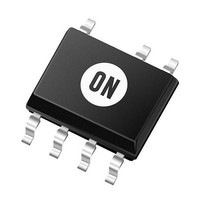NCP1236BD65R2G ON Semiconductor, NCP1236BD65R2G Datasheet - Page 14

NCP1236BD65R2G
Manufacturer Part Number
NCP1236BD65R2G
Description
IC CTLR CURR MODE 65KHZ 7-SOIC
Manufacturer
ON Semiconductor
Datasheet
1.NCP1236AD65R2G.pdf
(34 pages)
Specifications of NCP1236BD65R2G
Frequency - Max
70kHz
Pwm Type
Current Mode
Number Of Outputs
1
Duty Cycle
85%
Voltage - Supply
9.5 V ~ 28 V
Buck
No
Boost
No
Flyback
Yes
Inverting
No
Doubler
No
Divider
No
Cuk
No
Isolated
Yes
Operating Temperature
-40°C ~ 125°C
Package / Case
8-SOIC (0.154", 3.90mm Width) 7 leads
Duty Cycle (max)
85 %
Output Current
500 mA
Mounting Style
SMD/SMT
Switching Frequency
65 KHz
Operating Supply Voltage
- 0.3 V to + 28 V
Supply Current
+/- 30 mA
Maximum Operating Temperature
+ 125 C
Fall Time
40 ns
Minimum Operating Temperature
- 40 C
Rise Time
40 ns
Lead Free Status / RoHS Status
Lead free / RoHS Compliant
Available stocks
Company
Part Number
Manufacturer
Quantity
Price
Company:
Part Number:
NCP1236BD65R2G
Manufacturer:
ON
Quantity:
5
Company:
Part Number:
NCP1236BD65R2G
Manufacturer:
ON Semiconductor
Quantity:
1 300
Part Number:
NCP1236BD65R2G
Manufacturer:
ON/安森美
Quantity:
20 000
Typical Operation
•
•
•
•
Start−up: The HV start−up current source ensures the
charging of the V
threshold V
enough (above V
start. The controller then delivers pulses, starting with a
soft−start period t
linearly increases before the current−mode control takes
over. During the soft−start period, the low level latch is
ignored, and the latch current is double, to ensure a fast
pre−charge of the Latch pin decoupling capacitor.
Normal operation: As long as the feedback voltage is
within the regulation range and V
above V
(with jittering) in current−mode control. The peak
current (sensed on the CS pin) is set by the voltage on
the FB pin. Fixed ramp compensation is applied
internally to prevent sub−harmonic oscillations from
occurring.
Light load operation: When the FB voltage decreases
below V
33 % of the maximum load (for a DCM design), the
switching frequency starts to decrease down to
f
helps to improve the efficiency in light load conditions.
The frequency jittering is enabled in light load
operation as well.
No load operation: When the FB voltage decreases
below V
% of the maximum load, the controller enters skip
mode. By completely stopping the switching while the
feedback voltage is below V
OSC(min)
CC(min)
FB(foldS)
skip(in)
. By lowering the switching losses, this feature
CC(on)
, typically corresponding to a load of 2
, the NCP1236 runs at a fixed frequency
, typically corresponding to a load of
HV(start)
CC
SSTART
, until the input voltage is high
capacitor up to the start−up
) to allow the switching to
during which the peak current
skip(out)
CC
, the losses are
is maintained
http://onsemi.com
14
•
•
•
further reduced. This allows minimizing the power
dissipation under extremely low load conditions. As the
skip mode is entered at very light loads, for which the
peak current is very small, there is no risk of audible
noise. V
V
provide sufficient level of V
condition.
Overload: The NCP1236 features timer−based
overload detection, solely dependent on the feedback
information: as soon as the internal peak current
setpoint hits the V
count. When the timer elapses, the controller stops and
enter the protection mode, autorecovery for the B
version (the controller initiates a new start−up after
t
is released if a brown−out event occurs or V
Brown−out: The NCP1236 features a true AC line
monitoring circuitry. It includes a minimum start−up
threshold and an autorecovery brown−out protection;
both of them independent of the ripple on the input
voltage. It can even work with an unfiltered, rectified
AC input. The thresholds are fixed, but they are
designed to fit most of the standard AC−DC conversion
applications.
Latch−off: When the Latch input is pulled up (typically
by an over−voltage condition), or pulled down
(typically by an over−temperature condition, using the
provided current source with an NTC), the controller
latches off. A voltage higher than V
pin has the same effect. The latch is released when a
brown−out condition occurs, or when the V
autorec
CC(min)
elapses), or latched for the A version (the latch
CC
by the DSS, if the auxiliary winding does not
can be maintained between V
ILIM
clamp, an internal timer starts to
CC
voltage under this
CC(ovp)
CC(on)
on the VCC
CC
CC
is reset.
is reset).
and











